The Historic Aircraft Museum

Before
the
Southend
Historic
Aircraft
Museum
(SHAM)
opened
in
1972
a
small
group
of
aviation
enthusiasts,
who
were
based
at
Biggin
Hill
airport
in
Kent,
formed
a
small
collection
which
was
named
The
British
Historic
Aircraft
Museum.
Their
main
task
was
the
restoration
of
a
North
American
Mitchell
HD368
aircraft.
The
aircraft
had
been
damaged
during
the
1966
Biggin
Hill
Air
Fair;
the
damage
had
been
caused
when
the
cockpit
hatch
and
circular
hatch
were
forcibly
removed.
The
group
moved
to
Southend
in
1967
and
made
an
application
to
construct
a
hanger
in
Aviation
Way
to
display
the
aircraft
they
had
collected.
Local
aviation
enthusiasts
were
recruited
to
work
on
the
renovation
of
the
aircraft
in
their
spare
time,
this
work
included
re-sprays,
fabrication
of
new
parts,
and
general
maintenance
work
to
keep
the
airframes
in
good
condition.
The
project
collapsed
shortly
after
the
application
had
been
approved,
and
the
aircraft
were
left
on
the
eastern
boundary
of
the
airport.
Once
word
of
the
project’s
collapse
spread,
and
the
news
that
the
aircraft
were
still
on
site
and
within
easy
reach
of
the
public
road,
they
very
soon
became
the
target
of
the
local
vandals
and
souvenir
hunters.
The
south
eastern
climate,
combined
with
the
salt
spray
from
the
sea,
also
took
its
toll
on
the
airframes.
The
aircraft
which
were
at
the
airport
included
the
North
American
Mitchell
HD368,
Percival
Proctor
G-ANZJ
or
G-ANZS,
Hawker
Sea
Fury
WJ288
and
Hawker
Seahawk XE489.
When
it
seemed
that
the
aircraft
were
destined
for
the
scrapheap
a
consortium
of
Essex
Businessmen,
which
included
the
Budge
Brothers
(Group)
Ltd
and
The
Canterbury
(Group)
Ltd
of
Basildon,
stepped
in
to
save
the
aircraft.
The
consortium,
who
were
all
aviation
enthusiasts
and
amateur
pilots,
formed
the
company
that
took
over
the
ownership
of
the
aircraft
and
breathed
new
life
back
into
the
museum
project.
They
re-applied
for
planning
permission
for
the
museum
hanger,
as
well
as
a
number
of
other
buildings
which
included
a
conference
centre
(to
be
named
The
De
Havilland
Suite),
a
large
car
park,
hotel
complex
and
a
petrol
station.
When
the
council
gave
the
go-ahead
the
building
work
started
on
preparing
the
site
for
the
museum.
Once
the
main
exhibition
hall
had
been
completed
the
aircraft
started
to
move
on
site
during
1970.
The
aircraft
on
the
eastern
boundary
had
now
been
joined
by
Glostor
Meteor
T7
XK635;
Gloster
Javelin
FAW9
XH768
(7929M);
Hunting
Percival
Provost
T.1
WV483
(7963M);
a
De
Havilland
Tiger
Moth;
a
Casa
2.111
GAWHB
(J-PR);
A
Fiat
G.46
MM53211
(BAPC79).
A
bargain
basement
Avro
Anson,
(which
had
belonged
to
local
company
ECKO),
was
up
for
sale
in
an
airworthy
condition
and
priced
at
£3,000,
but
it
was
virtually
donated
to
the
museum
for
the
sum
of
just
£300;
flitting
in
just
days
before
the
opening
of
the
museum
was
Saab
J-29f
29640,
the
aircraft
had
been
donated
to
the
museum
by
the
Royal
Swedish
Airforce;
De
Havilland
DH84
Dragon
1
G-ACIT
(the
actual
aircraft
which
inaugurated
the
first
passenger
flight
from
Scotland
to
the
Islands);
Europe’s
only
DHA3
Drover
3
G-APPP
(VH-FD),
which
had
last
seen
service
with
the
Australian
Royal
Flying
Doctors
Service;
Westland
Dragonfly
WG725;
SncanStampe;
Miles
Gemini;
and
possibly
the
world’s
last
airworthy
Avro
Lincoln
which
flew
into the airport on the 9th of May 1967.
In
April
1971
the
museum
took
Flying
Flea
G-ADXS,
the
rear
fuselage
of
Proctor
NP339
with
the
fabric
stripped
back
to
show
the
internal
structure,
a
sectioned
Rolls
Royce
Merlin
engine,
several
propellers,
and
a
parachute
for
a
week
long
display
at
the
South
Essex
motor
showroom
at
Basildon.
In
May
1971
the
Southend
Historic
Aircraft
Society,
(affiliated
to
the
museum),
had
a
stand
at
the
RAFA
display
at
North
Weald.
At
the
end
of
April
1971
The
Historic
Aircraft
museum
hosted
a
press
conference,
at
the
museum
site,
for
dignitaries
and
representatives
from
the
aeronautical
world,
local
press
and
council
including
the
Mayor
of
Southend
who
inaugurated
work
on
the
museum
building
(despite
it
already
being
well
underway!).
During
1971
the
museum
had
bought
a
26ft
long
trailer
for
transporting
aircraft
and
other
large
items
to
the
museum
site.
This
was
pressed
in
to
service
for
the
first
time
in
August
1971
when
it
was
dispatched
to
collect
the
Dragonfly
from
Balckbushe.
Other
trips
with
the
trailer
that
month
included
collection
of
a
Bristol
Hercules
engine
from
Lydd,
Miles
Gemini
G-AKGD
from
Wisley,
and
in
October
it
was
dispatched
to
RAF
Halton
to
collect
the
Provost.
In
September
1971
a
team
was
sent
to
RAF
Cranwell
to
dismantle
the
Javelin;
the
task
took
ten
days
after
which
it
was
collected
by
the
company
Aviation
Traders
and
taken
by
road
to
Southend.
De
Havilland
DH.84
Dragon
G-ACIT
flew
into
Southend
Airport
during
September
1971
and
it
was
kept
in
airworthy
condition
at
the
museum.
Blackburn
Beverley
XB261
flew
into
Southend
on
6th
of
October
1971
and,
before
its
final
landing,
the
aircraft
performed
a
“touch
and
go”
-
the
event
was
covered
by
the
local
press
and
TV
crews.
The
aircraft
remained
parked
on
the
airport
apron
for
a
few
weeks
before
it
was
moved,
under
its
own
propulsion,
to
the
museum
complex!
The
aircraft
was
moved
successfully
without
damage
to
itself
or
any
other
aircraft, however, a couple of huts on the airport were hit by the slipstream from the engines – the huts roofs were never seen again!
With
work
on
the
museum
complex
nearing
completion
in
1972,
early
February
saw
the
fence
around
the
site
modified
to
accommodate
two
30ft
gates
through
which
exhibits
would
be
moved
to
and
from
the
museum
compound.
Groundwork
included
laying
a
paved
roadway/apron
from
the
gates
to
the
hanger
doors
in
the
main
building.
Arriving
at
the
museum
in
early
1972
was
a
unique
project
Vampire
T11
XD527
obtained
from
Aviation
Traders;
it
was
to
have
been
the
prototype
of
an
executive
conversion
known
as
the
MJ.2
for
a
firm
called
Jetcraft
of
Las
Vegas,
and
was
to
use
the
Vampire
wings
and
tail
with
a
new
six-seat
fuselage.
Along
with
XD527
came
a
wooden
fuselage
mock-up
and
sundry
jigs,
patterns
and
manufactured
parts.
The
original
project
was
started
in
1969
but
was
abandoned
due
to
reported
difficulties
with
FAA
and
ARB
requirements.
Meteor
VZ683
arrived
at Southend, from Kemble, in January 1972; it had been kept in storage within the Aviation Traders hanger.
With
work
on
the
museum
site
nearing
completion,
the
first
two
aircraft
were
moved
from
the
storage
facility
within
the
airport
to
the
museum
complex.
The
move
took
place
on
14th
February
1972,
and
saw
the
Provost
&
airworthy
Dragon
moved
into
the
protection
of
the
main
building;
these
were
followed
by
the
Proctor,
Sea
Hawk,
Flea,
and
Sea
Fury.
Most
of
these
aircraft
were
in
the
process
of
being
readied
for
exhibition,
and
moving
them
into
the
new
building
meant
that
they
could
be
worked
on
no
matter
what
the weather had in store.
It
was
around
this
time
that
another
of
the
“star”
exhibits
was
acquired
–
the
Spanish
built
CASA2.111
G-AWHB
(Heinkel
H.E.
111H).
The
aircraft
had
been
languishing
at
West
Malling
airfield
in
Kent
for
a
number
of
years
following
the
filming
of
“The
Battle
of
Britain”
some
years
previously.
The
aircraft
flew
during
filming
but,
having
not
flown
since
the
end
of
the
film
shoot,
the
decision
was
made
to
have
the
aircraft
dismantled
and
taken
by
road
to
the
museum.
Aviation
Traders
again
stepped
in
to
help move the valuable aircraft to Southend.
Three
more
airworthy
aircraft
were
inspected
a
short
while
before
the
museum
opened.
The
first
of
these
was
Storch
D-EKMU
based
in
Norway,
it
was
decided
that
the
aircraft
would
make
a
valuable
addition
to
the
collection.
The
Storch
flew
into
Southend
a
few
days
after
the
museum
opened.
The
second
aircraft
inspected,
and
subsequently
bought,
for
the
museum
was
Harvard
LN-BNM
and
it
arrived
via
Felixstowe
a
few
days
before
the
opening.
It
was
quickly
reassembled
and
ready
for
the
museum’s
opening
day.
The
third
aircraft
was
a
Percival
Sea
Prince,
an
ex
“Admirals
Barge”,
based
at
Yeovilton;
however,
after
inspecting
the
aircraft,
it
was
found
to
be
in
need
of
too
much
work
to
bring
the
aircraft
up
to
a
civilian
operation
condition,
so
it
was
refused.
It
was
hoped
that
another
of
the
type
would
become
available
at
a
later
date
but
the
type
never
made
it
to
the
museum.
Arriving
just
before
the
opening
of
the
museum
was
the
dismantled
Tiger
Moth
G-APMM
which
arrived
from
Boscombe
Down,
this
replace,
the
airworthy
G-ANPE.
Another
totally
different
type
of
arrival,
just
days
before
the
opening,
was
for
the
museums
resident
cat
named
Squeak,
who
gave
birth
to
a
litter
of
four kittens. Sadly one of the kittens was too weak to survive but, once old enough, the remaining three were all found new homes!
The
museum
was
officially
opened
on
Friday
26th
of
May
1972
by
Air
Marshall
Sir
Harry
Burton
KCB,
CBE,
DSO,
RAF
who,
at
the
time,
was
Air
Officer
Commander-in-chief
of
Air
Support
Command.
The
following
day
the
museum
opened
to
the
public
an
airshow
was
held
to
celebrate
the
completion
of
the
project.
Unfortunately
the
day
began
overcast
and
by
the
time
the
display
was
due
to
start
the heavens opened, virtually washing out all but a few of the display aircraft.
The flying display had promised:
1. R.A.F. Spitfire
2. R.A.F. Hurricane
3. Rothman’s “Stampe” Aerobatic Team
4. Aerobatic Gliding by Champion “Ladi” Marmol
5. Major Tom Ridgeway’s “Silver Stars” Sky-diving Team
6. Low-level crop spraying demonstration
7. A 1929 “Tom Titt” Bi-plane from the Shuttleworth Collection
8. A “Cirrus Moth” from the Shuttleworth Collection
9. An ascent by a Hot Air Balloon
10. A formation of Turbulents tied together
11. “Jungman” & “Tiger Moth”
12. R.A.F. “Skeeter” Helicopter
13. Bill Cole’s “Flying Flea”
14. The Museum Aircraft
15. A young lady wing walking on a Bi-plane
16. De Havilland “Pussmoth” G-AEOA (founding aircraft of East Anglian Flying Services).
The
museum
charged
an
entry
fee
of
£1
for
adults
and
50p
for
children
on
the
day.
The
fee
included
car
parking,
museum
entrance,
air
display
and
a
program.
Throughout
the
day
joy-flights
in
either
a
fixed
wing
aircraft
or
a
helicopter
were
also
available.
There
was
also
the
opportunity
to
take
up
flying
lessons
using
a
Cessna
150.
The
commentary
for
the
show
was
by
Keith
Fordyce,
who
was
at
the time a well-known TV & Radio commentator.
On
site
for
the
opening
of
the
museum
was
the
mighty
Blackburn
Beverley
XB261,
this
aircraft
had
last
been
seen
with
the
A&AEE
at
Boscombe
Down
where
it
had
been
used
for
parachute
drop
trials
with
the
clam
doors
removed.
This
was
the
only
Beverley
to
fly
across
the
Atlantic.
The
flight
was
to
Canada
for
cold
weather
trials
and
this
flight
was
commemorated
by
the
Maple
Leaf
flag
painted
on
the
aircrafts’
nose.
The
first
flight
of
the
aircraft
took
place
on
Tuesday
5th
July
1955,
and
its
last
flight
was
from
its
base
at
Boscombe
Down
in
to
Southend
Airport,
on
Friday
8th
October
1971.
In
July
1972
a
replica
Bleriot
arrived
at
the
museum,
followed
by the Skeeter arriving in early August of the same year.
A
further
acquisition
was
the
Messerschmidt
Me109
which
was
taken
by
road
from
the
Kent
Battle
of
Britain
Museum
(KBoB),
it
was
joined
at
Southend
in
1973
by
a
replica
Hurricane
also
from
the
KBoB.
With
the
demise
of
Channel
Airways,
on
1st
February
1972,
a
number
of
artefacts
were
salvaged
including
Viscount
seating,
undercarriage
components,
and
the
bent
up
propeller
from
Viscount
G-APPU
which
had
skidded
off
the
end
of
the
runway
after
it
aquaplaned
on
Saturday
4th
May
1968.
The
largest
item
collected
was
the
nose
section
of
Viscount
G-ATVE
which
was
converted
into
a
walk
through
exhibit
and
included
sounds
of
the
aircraft
engines
running.
On
the
17th
April
1975
the
Fairchild
Cornell
arrived
but,
sadly,
the
aircraft
had
suffered
major
damage
during
its
transportation
from
America
as
it
had
been
inadequately
secured
within
its
container.
Included
in
the
container,
alongside
the
aircraft, was a new nose section for the Mitchell which had also suffered damage.
During
the
summer
of
1975
Marconi
Aerospace
completed
its
restoration
work
on
Westland
Scout
XP165,
the
ex-RAE
Farnborough
aircraft had lost its engine, boom and some cockpit instrumentation. It was collected at the end of July and transported to Southend.
A
Custom
&
Street
Hot
Rod
show
was
held
at
the
museum
over
the
weekend
of
Friday
29th
August
–
Sunday
31st
August
1980.
It
was organised by the Evening Echo.
Westland
Widgeon
G-APTW
was
placed
on
loan
with
the
museum
on
23rd
July
by
its
owner
Helicopter
hire.
A
special
exhibition
was
hosted
at
the
museum,
between
the
18th
July
&
29th
August
1981,when
the
then
local
based
Matchbox
Company
exhibited
the
latest
aircraft kits it was producing; a number of the aircraft exhibited by the museum had been used for references in the production of the
kits.
In
October
1981
the
Leisure
Sport
Thorpe
Park
collection,
of
five
airworthy
First
World
War
replica
aircraft,
flew
in
to
be
housed
at
the
museum
over
the
winter
after
a
long
season
of
display
flying
across
the
country.
The
collection
consisted
of
Sopwith
Camel
G-
AWYY
marked
up
as
C1701,
an
all
red
Fokker
Triplane
G-BFER,
Ernst
Udet’s
red
and
white
Fokker
DVII,
Spad
XIII
G-BFYO
in
the
colours
of
the
French
ace’s
Georges
Guynemer
when
he
flew
with
the
3rd
Escadrille,
&
the
black
and
silver
schemedAlbatross
Va
G-
BFXL.
A
military
vehicle
rally
was
held
at
the
museum
over
the
weekend
of
Saturday
14th&
Sunday
15th
August
1982.
It
was
followed
by
a
Competition Motorcycle Show over the period of 16th – 24th October in the same year.
The
museum
had
started
off
as
a
very
popular
attraction,
but
began
to
fall
in
popularity
and
in
1983,
after
10
years
of
hard
work,
the
announcement
was
made
that
“The
Historic
Aircraft
Museum
at
Southend
is
to
close
on
the
27th
of
March
this
year.”
The
closure
of
the
museum
was
attributed
to
a
number
of
reasons
which
included
rising
running
costs,
reduction
in
the
number
of
visitors,
the
opening of the much larger R.A.F. Museum at Hendon, and poor support from the council.
On
the
10th
May
1983
an
auction
was
held,
at
the
museum,
to
sell
off
the
aircraft
and
the
rest
of
the
museum’s
collection
of
aviation
artefacts.
In
total
just
over
£175,000
was
raised
from
250
lots.
Few
of
the
aircraft
were
expected
to
reach
their
reserve
bid,
as
many
of
them
had
stood
outside
in
the
open
for
more
than
10
years
suffering
from
the
corrosive
salt
spray,
gale
force
winds,
rain,
snow,
hail,
and
anything
else
the
south-east
weather
could
throw
at
them.
The
aircraft
had
also
suffered
at
the
hands
of
vandals
and
souvenir
hunters,
which
resulted
in
many
of
the
aircraft
having
parts
missing
and
entrance
hatches
damaged
from
having
been
forced open.
It
wasn’t
just
the
airframes
that
were
sold
off
that
day,
the
entire
contents
of
the
main
exhibition
hall
were
also
put
on
the
market;
this
included
an
extensive
aviation
library,
aircraft
manuals
from
the
1920s
and
30s,
collections
of
pictures
(prints
and
photographs),
a
number
of
aero
engines,
and
rare
philatelic
covers.
As
well
as
the
aircraft
owned
by
the
museum
a
number
of
other
aircraft
were
flown
into
the
airport
to
be
included
in
the
sale;
these
included
Tipsy
Belfair
G-APOD,
Stinson
Voyager
G-BCUM,
Monocoupe
G-
AFEL,
a
Dutch
Tiger
Moth,
and
French
owned
Lockheed
12A
F-BFUD.
At
the
auction
the
lowest
price
paid
for
an
aircraft
was
£1,000,
this
was
for
the
Javelin
which
was
bought
by
Air
Classik
of
Germany
and,
in
contrast,
the
highest
price
paid
was
£34,000
for
the
Sea
Fury.
All
but
one
aircraft
were
sold,
this
being
the
Beverley.
Most
of
the
aircraft
were
rapidly
removed
from
the
site,
but
some
were
still
in
situ
in
late
August
early
September,
these
included
the
Lincoln,
Fiat
G.46,
Javelin,
Mitchell,
Beverley,
and
several
aircraft that were not included in the sale but had been allocated new homes.
When
the
Beverley
failed
to
sell,
the
Airport
Moat
House
Hotel
proposed
to
tow
the
aircraft
across
the
road
and
set
it
up
in
a
mini
museum
with
ex
British
Air
Ferries
ATL
98
Corvair
G-AOFW
but,
when
the
airliner
was
sold
for
£1,400
to
a
scrap
metal
merchant
who
destroyed
the
aircraft
using
a
JCB,
the
project
was
abandoned
and
the
Beverley
was
left
to
stand
where
it
had
been
for
over
a
decade.
In
September
1985
the
Beverley
was
given
a
new
role
to
perform,
it
was
to
‘guard’
a
new
leisure
complex
that
was
to
be
housed
inside
the
former
exhibition
hall
at
the
museum.
The
building
had
been
converted
in
to
one
of
Europe’s
largest
roller-skating
halls (Roller city).
The
British
Air
Reserve
at
Lympne
had,
by
this
time,
obtained
Anson
G-AGPG
and
placed
it
in
a
fabricair
hanger
in
preparation
for
it
to
be
transported
to
their
base.
The
aircraft
didn’t
leave
the
museum
site
until
April
1986
by
which
time
it
was
in
a
very
poor
condition
and
in
need
of
major
restoration.
The
aircraft
was
moved
to
Kent
where
it
stood
in
open
storage
for
a
number
of
years
before moving up to Manchester for long-term restoration.
In
early
1989,
and
after
more
than
18
years
at
Southend,
the
Beverley
was
finally
read
its
last
rites
when
it
was
deemed
to
be
unsafe
and
on
Friday
7th
April
the
aircraft
was
scrapped.
The
once
mighty
aircraft
was
smashed
to
pieces
over
the
weekend
by
a
JCB.
All
that
remained
of
the
aircraft
was
the
cockpit
section
which
originally
went
on
show
at
Duxford
before
its
onward
move
to
the
Newark
Air Museum.
In
the
mid
1990s
plans
were
unveiled
to
build
on
the
former
museum
car
park
and
the
De
Havilland
Suite
conference
centre.
The
plans
for
a
Roman
style
swimming
and
fitness
centre
gained
council
approval
and
work
on
the
project
began
in
1996.
Works
to
the
old
museum
building
included
removal
of
the
original
windows
and
cladding,
each
being
replaced
with
“Roman”
style
architecture;
the
fast
jet
parking
area
was
landscaped
in
to
gardens.
For
many
years
the
main
outdoor
parking
area
was
used
for
the
storage
of
new
cars, after which the land was left empty for a number of years and became overgrown.
The museum also had a unique feature – a flat for the live-in attendant…..and his cat!
Southend-on-Sea
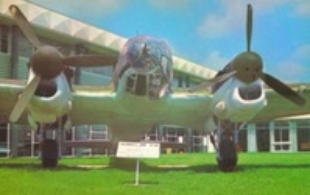
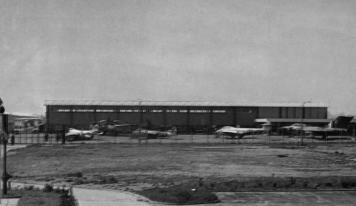
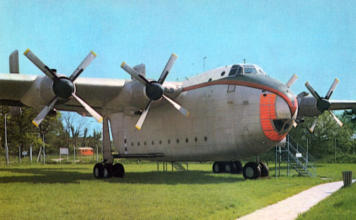
Museum Memorabilia
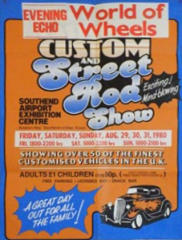
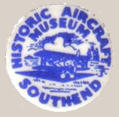
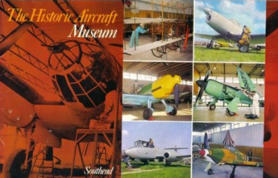
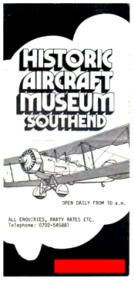

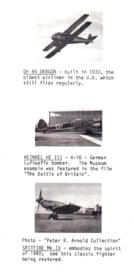
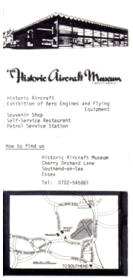

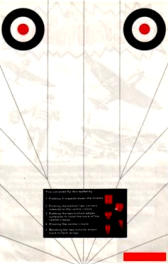
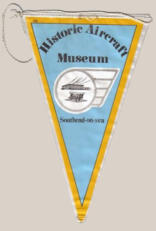

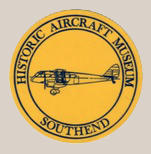
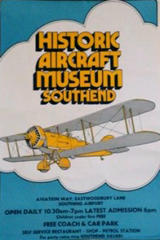
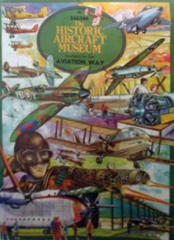



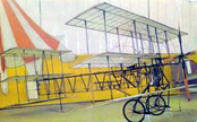
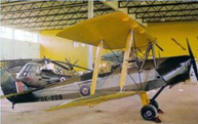
Opening Day Airshow Programme
Museum Guide Book
Museum Button Badge
Museum Sticker
Casa 2.111
Beverley
Tiger Moth
Roe Triplane
Museum (type 1)
Custom Car Show August 1980
Museum (type 2)
Museum leaflet (type 2) The leaflet that had instructions on how it could be folded and flown!
Museum leaflet (type 1) The first leaflet was made from a single sheet of paper folded in half to produce a four page leaflet
Museum Pennant
Museum Sew-on patch
Postcards
Posters
Leaflets
Like any museum the Southend Historic Aircraft Museum had its own memorabilia for sale
Vista
of
Museum
Building
as
seen
from
the
Airport
Hotel
and Zero 6 Complex in Aviation Way, Southend
Beverly C.1
Casa 2.111
The Ekco Anson. G - AGPG Avro 652 A. Anson 19SRS 1
Visiting the Museum
The
museum
was
one
of
the
first
purpose
built
aircraft
museum
complexes
built.
The
area
didn't
just
include
a
collection
of
historic
aircraft but also had a conference centre, hotel, petrol station, nightclub and a car park.
The
museum
building
it's
self
was
a
modern
style
building
with
high
amounts
of
light
entering
it
to
give
the
best
possible
views
and
the
best
opportunities
for
photography.
Walking
up
Aviation
Way
you
would
have
passed
the
building
and
the
Fast
Jet
Line-up,
the
Casa 2.111 and the main out door display.
On
entry
to
the
main
hall
the
cafeteria
was
on
the
left
which
was
capable
of
seating
120
people
at
any
one
time.
On
the
right
was
the
"Kit
Room"
this
was
the
museum
shop
stacked
full
of
model
kits,
souvenirs,
books,
postcards
and
every
thing
else
associated
with
aircraft.
The
main
exhibition
hall
contained
the
World
War
1,
World
War
2,
photo
archives
and
other
collections,
also
here
was
the
aero engine collection and other related aero memorabilia.
On
the
airframe
side
this
was
where
the
“rare
birds”
were
housed,
these
were
the
aircraft
deemed
too
valuable
and
far
too
fragile
to
go
on
external
display.
These
aircraft
included
the
replica
Roe
Triplane,
the
DH
Moth
Collection,
the
Flying
Fleas,
Sea
Fury,
Proctor,
Storch,
Spitfire,
Dragonfly,
Widgeon
and
the
pride
of
the
museum
the
DH84
Dragon
a
number
of
other
aircraft
were
also
stored
indoors.
Outside
the
museum
was
a
Spanish
built
Casa
2.111
this
sat
next
to
a
former
Belgian
Air
Force
FU-6
Thunderstreak
facing
these
was
the
“Fast
Jet”
Line-up
consisting
of
a
Javelin,
Sea
Hawk,
Meteor
and
an
ex
Swedish
Air
Force
Saab
J29F.
On
the
main
outdoor
display
area
next
to
the
main
exhibition
hall
sat
the
bulk
of
the
collection
this
included
such
aircraft
as
the
founding
aircraft
the
Mitchell,
the
mighty
Beverley,
the
former
Ekco
Anson,
the
Napiers
research
Lincoln,
Harvard,
the
rare
P.531
(test
bed
scout),
Drover and a wide range of other aircraft.
Many
of
the
aircraft
had
their
cockpits
open
to
the
public
including
the
Anson,
Beverley
and
Viscount
nose
section.
The
motto
of
the
museum was one of public participation and one saying "We try to keep a minimum of DO NOT TOUCH notices."
The
museum's
opening
times
were:
Winter
months
up
until
June
6th
Saturdays
&
Sundays
only
From
11:00
until
18:00.
From
June
6th
until
winter
normal
opening
times
will
be
in
effect
this
being
7
days
a
week.
From
10:00
until
18:00.
Group
visits
can
be
arranged
outside of normal opening hours but only on Mondays during winter.
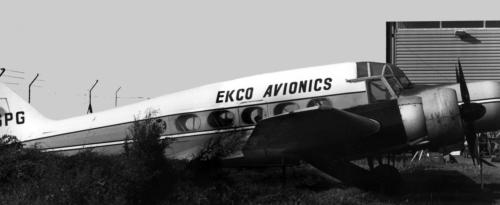
Southend Timeline Southend-on-Sea © 2009 - 2024. All Rights Reserved



Southend-on-Sea’s No 1 History Website! Documenting The Town & The Townspeople

Now Incorporating The Sea Of Change Website
Website Info:


Chalkwell ▪ Eastwood ▪ Leigh-on-Sea ▪ Prittlewell ▪ Shoeburyness ▪ Southchurch ▪ Thorpe Bay ▪ Westcliff-on-Sea
SOUTHEND CITY
































































